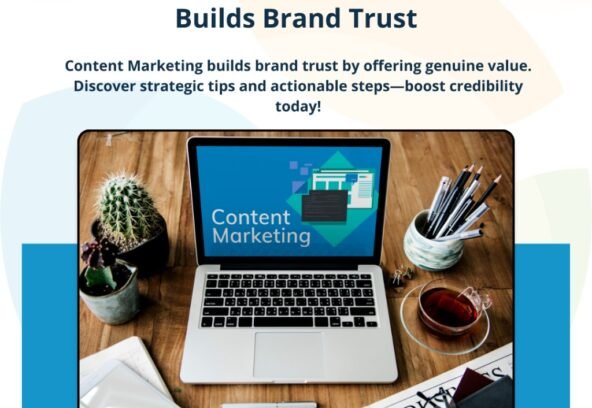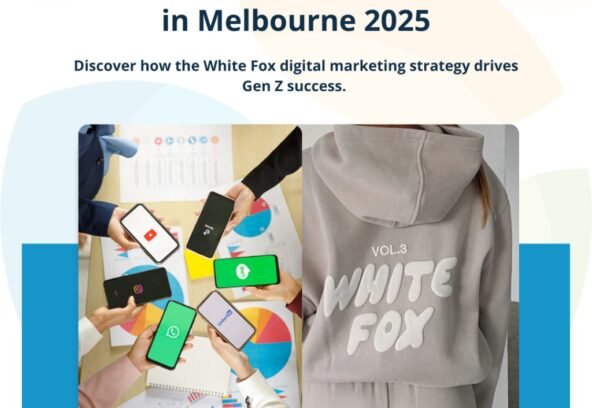Content Marketing isn’t just a tactic—it’s the heartbeat of brand credibility. By offering genuinely useful, educational, or entertaining material, you create an authentic connection. This relationship transforms a faceless company into a familiar, reliable partner in your audience’s journey.
Trust opens doors: it shortens purchase cycles, spurs word-of-mouth referrals, and lays the groundwork for lifelong loyalty. When readers know you’re more interested in solving their problems than in pushing products, they reward that authenticity with attention, engagement, and, ultimately, conversions.
This blog unpacks the why and how of building trust through content, diving into strategy, SEO, social engagement, and integration across channels. By the end, you’ll have a clear roadmap to turn your brand into a trusted resource—and a community of advocates.
1. Why Trust Is Today’s Most Valuable Currency
Trust is intangible, yet it drives every click, share, and purchase decision. Without it, even the most polished marketing efforts fall flat.
- Perception of Expertise: High-quality content signals that you know your field, positioning you as a go-to authority.
- Emotional Connection: When you understand and address real pain points, readers feel seen—and brands that “get” them win lasting loyalty.
- Reduced Risk: Trust lowers perceived risk. Prospective buyers feel safer choosing a brand they’ve learned from rather than one they’ve only heard about in ads.
In practical terms, a trust-focused content approach yields higher open rates on emails, more time spent on site, and a surge in social shares. Those metrics ripple through your entire marketing ecosystem—impacting SEO, lead generation, and sales.
2. Laying the Foundation with a Solid Content Strategy
A content strategy isn’t an optional checklist; it’s the blueprint that aligns every piece of content with your overarching business goals and audience needs.
Audience Personas and Pain Points
- Research demographic and behavioral data.
- Conduct surveys and interviews to capture language and challenges in your audience’s own words.
- Document three to five primary personas, each with unique goals and content preferences.
Mapping the Buyer’s Journey
- Top of Funnel (Awareness): Broad educational posts, how-to guides, infographics.
- Middle of Funnel (Consideration): Case studies, comparison charts, in-depth reports.
- Bottom of Funnel (Decision): Product walkthroughs, testimonials, trial offers.
Editorial Calendar and Workflow
- Establish a consistent publishing rhythm—weekly blog posts, bi-weekly newsletters, monthly webinars.
- Assign clear roles: topic ideation, writing, editing, design, and promotion.
- Regularly audit performance to refine topics and formats based on real engagement data.
When every team member understands the why behind each piece, you maintain focus, avoid wasted effort, and build a library of content that reliably nurtures trust at each stage.
3. Boosting Authority Through SEO Content Writing
When your articles and guides appear at the top of search results, potential customers instinctively view you as more credible. That’s the power of seo content writing.
Keyword Research with Intent
Identify not just high-volume keywords, but those that match user intent—informational, navigational, or transactional. Use tools like Google Search Console and keyword planners to uncover long-tail phrases your audience searches.
On-Page Best Practices
- Craft descriptive, benefit-driven title tags and meta descriptions.
- Organize content with clear H1–H3 headings that include target keywords naturally.
- Break text into short paragraphs and bullet lists for scan-friendly reading.
Thoughtful Internal and External Linking
- Link to cornerstone articles (pillar pages) to reinforce topical authority.
- Reference reputable external sources to back up claims and broaden perspectives.
Technical SEO Checks
- Use fast-loading, mobile-friendly page designs.
- Implement structured data (schema) to highlight FAQs, reviews, and events.
Rankings alone don’t build trust—readers must stay and engage. Combine SEO best practices with engaging storytelling, rich visuals, and clear CTAs to keep prospects exploring your site.
4. From Broadcast to Dialogue: Crafting Your Social Content Strategy
A robust social content strategy shifts your brand’s role from broadcaster to conversationalist. Social platforms are where trust blossoms through two-way engagement.
Choosing the Right Platforms
- LinkedIn for professional thought leadership and case studies.
- Instagram for behind-the-scenes glimpses and user stories.
- Twitter/X for real-time updates, industry news, and rapid responses.
- Facebook for community building through groups and events.
Engagement Tactics That Build Trust
- Polls, quizzes, and surveys that invite opinions—then showcase the results.
- Live Q&A sessions featuring product experts or guest influencers.
- User-generated content campaigns: encourage customers to share success stories with branded hashtags.
Storytelling for Human Connection
People remember stories far longer than stats. Share customer journeys, team spotlights, and the brand’s origin story. Authentic narratives create emotional bonds, turning casual followers into passionate advocates.
5. Seamless Integration: Content Marketing in Digital Marketing
To maximize impact, content marketing in digital marketing must never operate in a silo. Each channel should echo and amplify the same value-first message.
Email Campaigns
- Welcome Series: Deliver a multi-email sequence that educates first, then introduces your offerings.
- Behavioral Triggers: Automatically send targeted content based on user actions—downloads, page visits, or cart abandonment.
Paid Promotion
- Promote high-performing blog posts on social media to reach look-alike audiences.
- Use retargeting ads to re-engage visitors who consumed educational content but haven’t converted.
Sales and Marketing Alignment
- Equip sales teams with content assets: one-pagers, slide decks, and objection-handling FAQs.
- Regular huddles to share feedback: which case studies or blog posts resonate most in demos and calls.
An integrated approach ensures that whether prospects encounter you via organic search, an email, or a social ad, they experience a consistent, value-packed journey that deepens trust at every touchpoint.
6. Measuring Trust: Key Metrics Beyond Traffic
While pageviews and unique visitors are useful, trust requires deeper measurement. Look for indicators that show genuine interest and confidence.
Engagement Indicators
- Average time on page and scroll depth: signals content is resonating.
- Social shares, comments, and direct messages: reflect real emotional or intellectual investment.
Authority Signals
- Branded search volume: more people specifically searching for your brand name means rising trust.
- Backlinks from respected publications: external validation of your expertise.
Business Impact Metrics
- Conversion rate of content-driven landing pages: shows how well your material drives action.
- Customer Lifetime Value (CLV): loyal customers spend more over time.
- Net Promoter Score (NPS) and brand sentiment surveys: direct feedback on whether your audience would recommend you.
Use a mix of analytics platforms—Google Analytics, social insights, marketing automation dashboards—to build a trust scorecard. Track progress monthly and refine your approach based on what’s actually building credibility.
7. Brands That Nailed It: Real-World Trust Builders
Seeing successful examples sparks inspiration—and provides clear lessons.
HubSpot
HubSpot’s blog library covers every stage of marketing and sales. They pair in-depth guides with templates and calculators, positioning themselves as the go-to inbound marketing authority.
Buffer
Buffer’s transparent monthly revenue reports and open-book salary structure created an unprecedented level of candidness. Their vulnerability attracted an engaged community that trusts them implicitly.
Patagonia
By weaving environmental activism into every piece of content—from blog posts to documentaries—Patagonia built trust with eco-conscious customers who view the brand as a genuine advocate, not just a retailer.
Key takeaways from these brands: commit to transparency, address real audience concerns, and deliver actionable takeaways consistently.
8. Common Pitfalls to Avoid
Even seasoned marketers stumble. Watch out for these trust-eroding missteps:
Inconsistent Publishing
Sporadic content bursts followed by silence send mixed signals. Stick to your editorial calendar—even when resources are tight.
Ignoring Feedback
Social comments, survey responses, and support questions offer goldmines of insight. When you don’t adapt content based on audience needs, trust dwindles.
Over-Optimization
Keyword stuffing, clickbait headlines, or aggressive CTAs can feel manipulative. Always prioritize genuine usefulness over short-term gains.
Stay vigilant: audit your content regularly for quality, relevance, and alignment with your audience’s evolving challenges.
Conclusion
Effective Content Marketing isn’t about quick wins; it’s a long-term commitment to helping your audience succeed. By anchoring your approach in a well-defined strategy, harnessing seo content writing best practices, engaging authentically on social channels, and weaving content seamlessly into your broader digital marketing efforts, you’ll cultivate genuine trust.
As you measure engagement, adjust based on feedback, and learn from the real-world successes and stumbles of leading brands, you’ll transform your organization from a faceless vendor to a valued guide. Trust isn’t built overnight, but each informative blog post, transparent update, and responsive social interaction brings you one step closer to becoming your audience’s most trusted resource.
Ready to start building that trust? Outline your next pillar topic today, set up a proactive editorial calendar, and watch as consistent value creation strengthens your brand’s reputation—and your bottom line.





